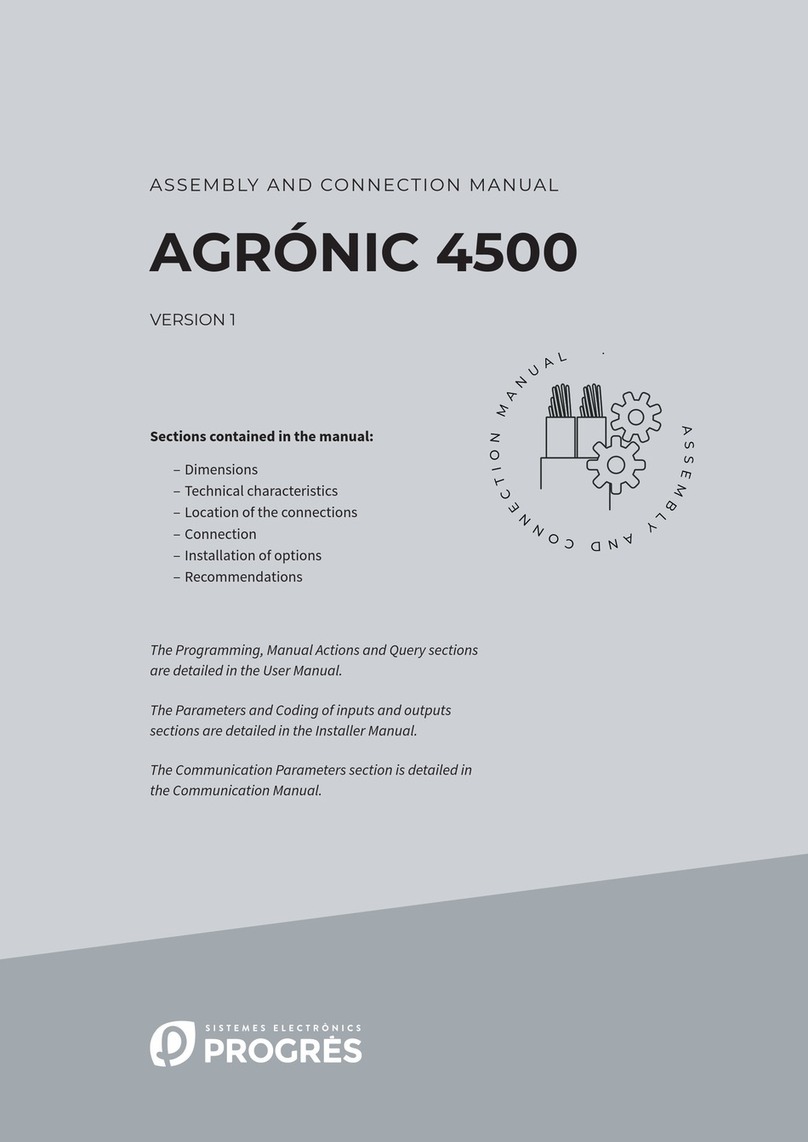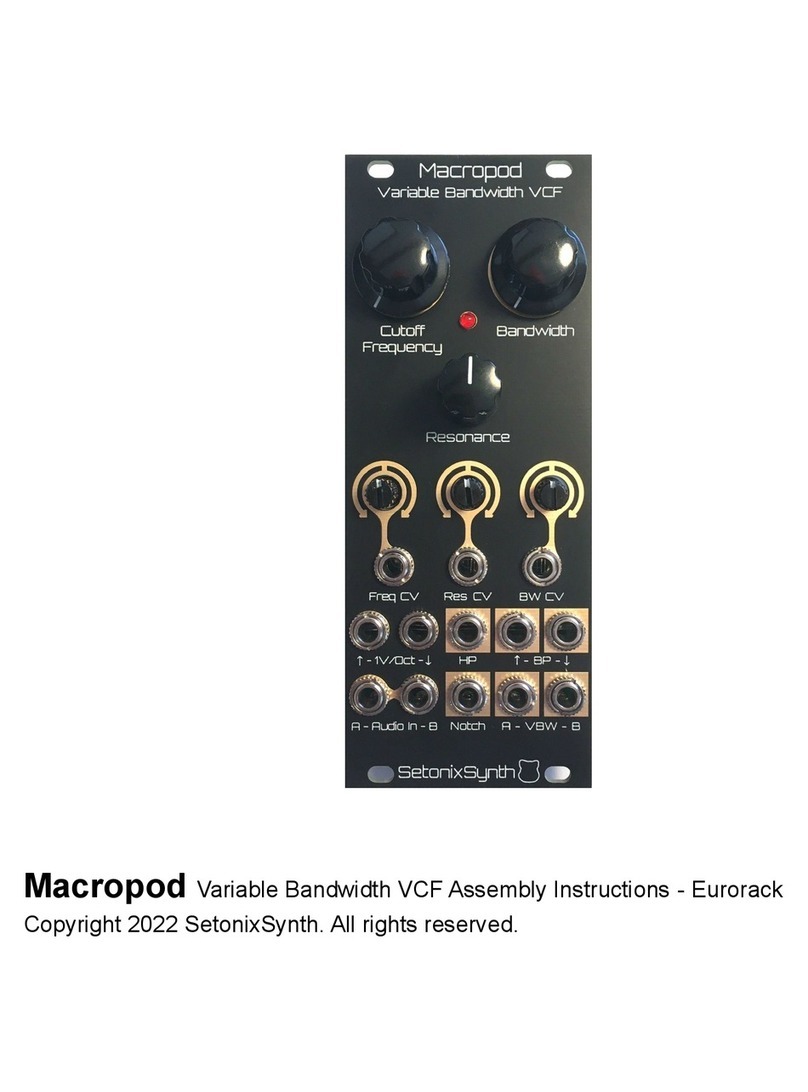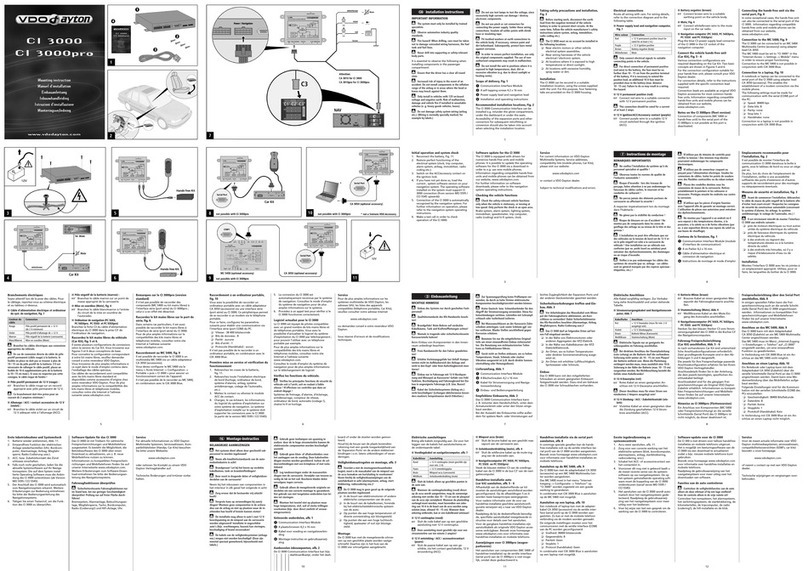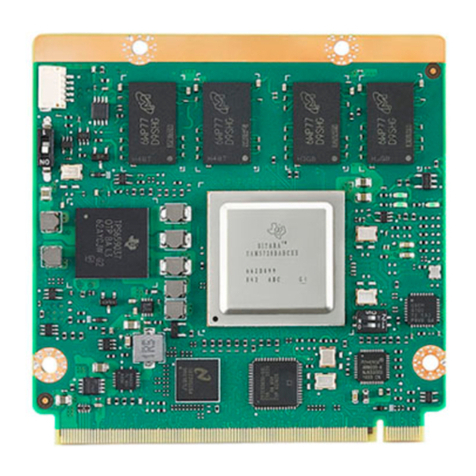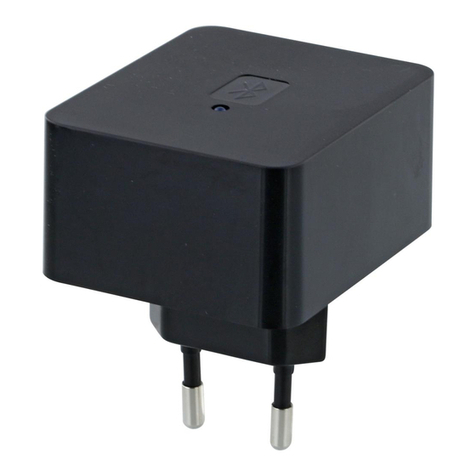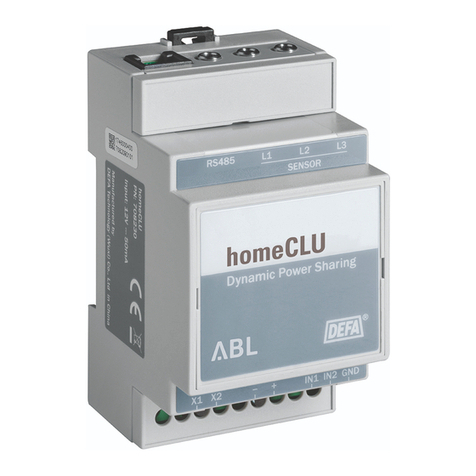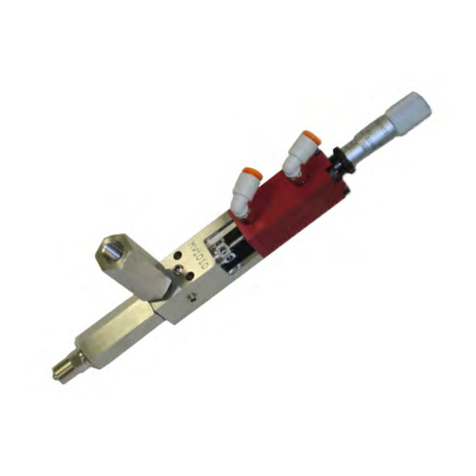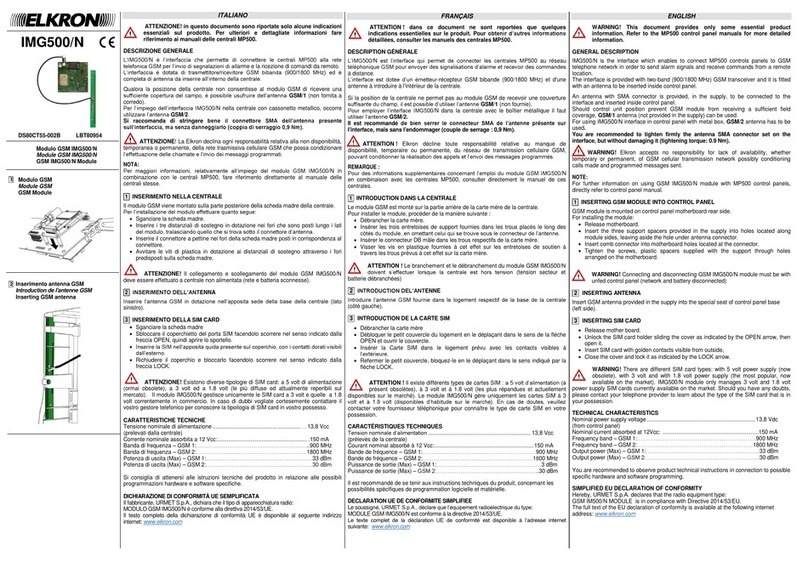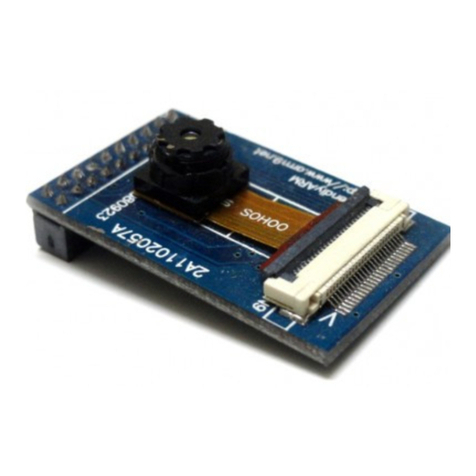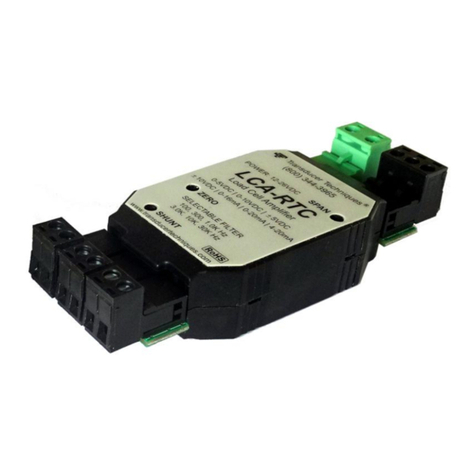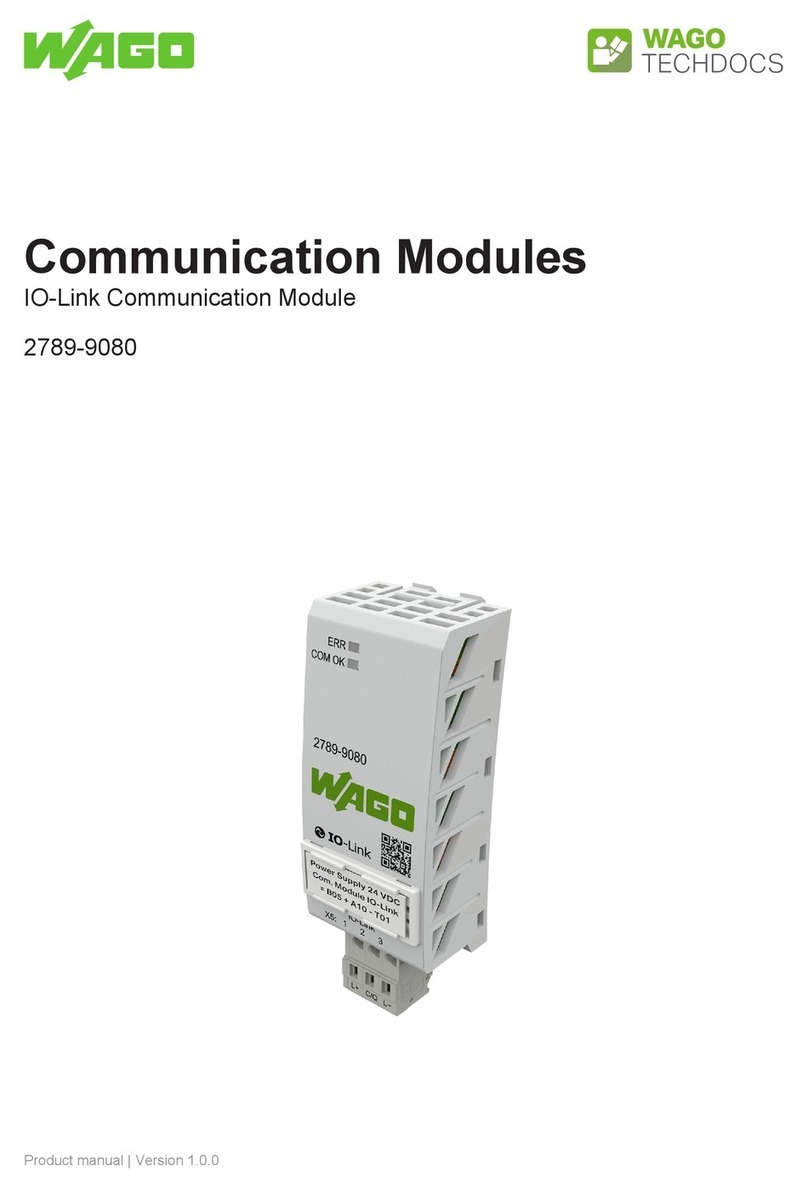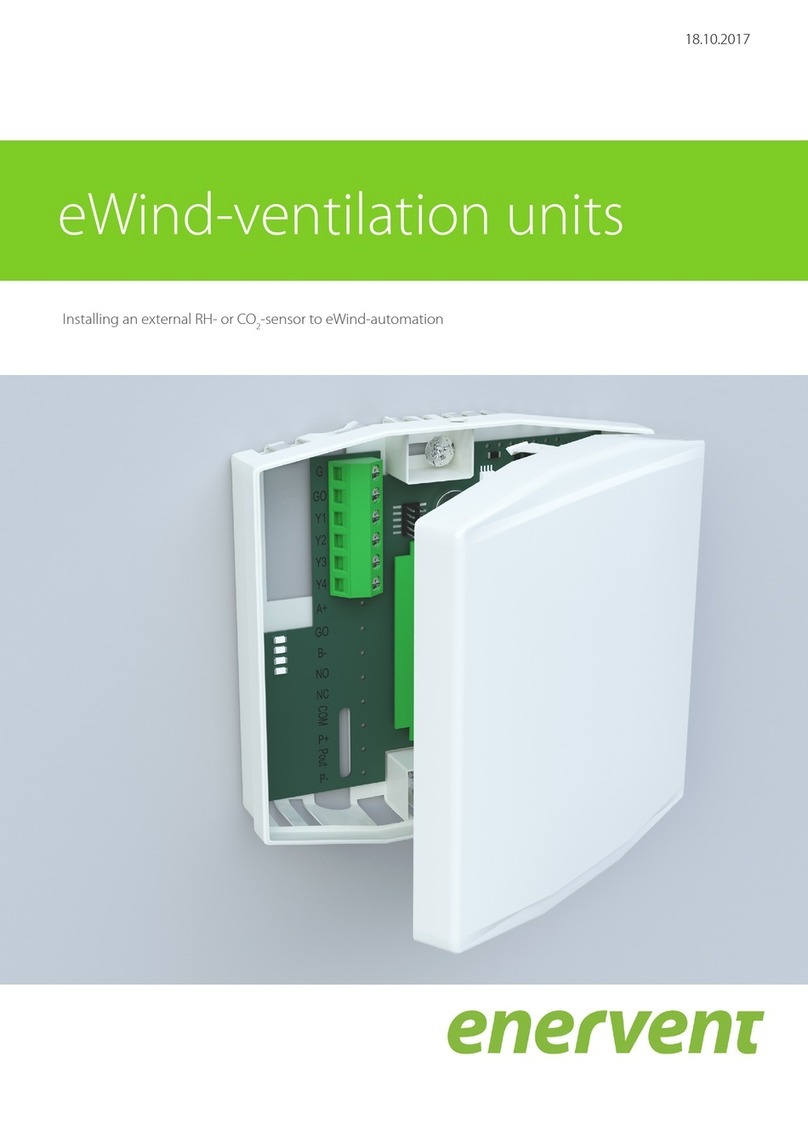Progres Agronic Monocable Module User manual

AGRÓNIC MONOCABLE MODULE
MAM
DESCRIPTION:
•This unit is used to activate solenoids and read meters and sensors from a distance using a 2-wire ca-
ble. According to the model, the Agrónic Monocable module (MAM) can connect up to:
oMAM2-41:
2 latch solenoids of 2 wires (or 1 of 3 wires)
4 digital inputs (2 can be meters)
1 sensor
oMAM5-71:
5 latch solenoids of 2 wires (or 2 of 3 wires)
7 digital inputs (5 can be meters)
1 sensor
oMAM8-101:
8 latch solenoids of 2 wires (or 4 of 3 wires)
10 digital inputs (8 can be meters)
1 sensor
•The connection between the MAM and the Agrónic is done through a linking unit, the Agrónic Mono-
cable Link (EAM). A 2-wire cable from the EAM connects all the MAMs. This cable not only communi-
cates the MAM but it also provides them with electrical power.
•Up to 120 MAM modules can be connected to a single EAM.
•The distance between the EAM and the last MAM on the line can surpass 10 km. (under certain condi-
tions).
•The built-in light indicates when the unit is communicating.
•Configuration and consultation using a Modules Reader (or through another reader, the Agrónic Mo-
nocable Reader, LAM) with screen and keyboard.
•Two-fold security:
oThe battery in each MAM lasts over 30 hours in the event of a power failure or a power cut in the
Monocable.
oThe batteries in the EAM last several hours in the even of a general power failure. With larger ca-
pacity batteries, it can keep operating for several days.
•Protection against overloads.
MAM2-41
MAM8-101

2
TECHNICAL CHARACTERISTICS:
Power supply
Power source 24Vdc through the Monocable bus, -20% +25%
Energy consumption: At rest:
While communicating:
2 mW
4 W
Outputs Inputs
Number 2 / 5 / 8 Number 4 / 7 / 10
Digital
Type free power contact
Number 1 (10 bits)
Type 12 Vdc or 16 Vdc
Trigger time: 80 ms
Capacitor charge: 3300 μF
Analog
Type analog 4 – 20 mA
Atmosphere Weight and size (approximate)
Temperature -10 °C to 70 °C MAM MAM with extension
Humidity < 85% Weight 0,7 Kg 1 Kg
Heigh 2000 m Height 180 mm 180 mm
Pollution Grade II Width 182 mm 254 mm
Depth 90 mm 90 mm
DECLARATION OF CONFORMITY
It follows the 89/336/CEE guidelines for the Electromagnetic Compatibility and the 73/23/CEE
guidelines of Low tension for the fulfillment of the product security. The fulfillment of the fol-
lowing specifications was demonstrated as indicated in the Official Diary of the European
Communities:
Emissions EN 50081-1:94 EN 55022:1994 Type B Radiated and conducted emissions.
Immunity EN 50082-1:97 EN 61000-4-2 (95) Immunity to electrostatic discharges.
EN 61000-4-3 (96) Immunity to the electromagnetic field of radioelectric
frequency.
EN 61000-4-4 (95) Immunity to fast transitional in gusts.
EN 61000-4-5 (95) Immunity to crash waves.
EN 61000-4-6 (96) Current injection.
EN 61000-4-11 (94) Variations to the power supply.
Low tension guidelines: EN 61010-1 Security requirements of measurement electric units,
control and use in laboratory.
This symbol indicates that the electrical and electronic equipment should not be disposed of as gen-
eral household waste at its end-of-life. Instead, the product should be handed over to the applicable
collection point for the recycling of electrical and electronic equipment for proper treatment, recovery
and recycling in accordance with your national legislation.

3
OPERATION:
The Agrónic Monocable system operates with a linking unit, the Agrónic Monocable Link (EAM), which con-
nects to the Agrónic using a RS485 bus or RS232 serial port and the ModBus communication protocol. The EAM
supplies the 24 Vdc which powers the entire Monocable system and distributes it through a 2-wire cable which in
turn connects all the Agrónic Monocable Modules (MAM).
Up to 120 MAMs can be connected to a single EAM (depending on the total length and type of cable used).
Each MAM is identified by a number and can be placed in any order along the line. This identification can be
changed at any time using the Modules Reader.
The MAMs are organized into groups of 10 (from 1 to 10, from 11 to 20, etc.). Every 6.6 seconds the output
status is sent to a group and each MAM in this group sends the status of their inputs, totals, sensors, etc. The
fewer groups on a line, the faster the communication is between each MAM. In the worst possible case, with 120
MAM connected on a line, it will take 80 seconds to connect to all the MAMs.
MAM with priority: if it is necessary that one MAM in particular needs to act very rapidly, either in the solenoid
activity or sending the sensor or digital input readings, it can be configured as an “MAM with priority”. This module
will connect to the EAM every 6.6 seconds. To do this the MAM occupies one communication space for each
group, which in turn means the MAMs that occupy its place in each group cannot connect to the line. Example: if
MAM 1 has priority, it cannot connect to the line, and nor can 11, 21, 31... or 111.
INPUTS AND OUTPUTS:
DIGITAL INPUTS:
There are up to 10 digital inputs, D1 to D10, which can function as a digital input. Inputs D3 to D10 can also
function as meters. When ameter is connected to adigital input, it has the ability to count up to 5pulses per second.
The common input return is connected to the terminal marked CD. The inputs corresponding with the termi-
nals run from D1 to D10.
The contacts on the unit that connect to a digital input must be free potential contacts.
SENSOR INPUT:
The MAM has one analog input for reading sensors that emit a 4 – 20 mA signal. The input also has a 200 Ω
resistor which can read voltages of 800 mV for the 4 mA and 4000 mV for the 20 mA.
The sensors are powered at 12 Vdc provided by the MAM. The sensor only receives power for the time that
has been configured, as for the rest of the time it has no power to it. The time between readings is configured on
site, and can differ according to the function of the MAM and the sensors. The sensor power is connected to the
0V and 12V terminals and the sensor reader to A1 terminal.
LATCH SOLENOIDS:
MAM can operate with two or three wires latch solenoids using:
-2-wire latch solenoids: the common return of all the solenoids is connected to CR terminal and the other
solenoid wire is connected to the terminals marked as R1 to R8.
-3-wire latch solenoids: With this type, the number of solenoids that can activate the MAM are cut in half.
The solenoid connections will be done at the common return borne at the CR terminal and the start and
stop wires at the following terminals:
solenoid 1 start at terminal R1 start at terminal R2
solenoid 2 start at terminal R3 start at terminal R4
solenoid 3 start at terminal R5 start at terminal R6
solenoid 4 start at terminal R7 start at terminal R8
The trigger voltage in the solenoid is programmable, and can be of 12 or 16 V.
Keep in mind that many latch solenoids with 3 wires can function perfectly well with 2 wires, if it were neces-
sary to use them.

4
AGRÓNIC MONOCABLE MODULE CONNECTIONS:
AGRÓNIC MONOCABLE MODULE EXTENSION (AMAM):
When an MAM has more than two outputs, it has an extension module (AMAM) to connect up the inputs and
outputs after the second one.
According to the MAM model, this is formed by:
•MAM2-41: main module
•MAM5-71: main module + extension
•MAM8-101: main module + extension
The connection between the main module and its extension is done with the extension connector and the
three terminals (“V-“, “CR” and “V+”) located on the side.

5
CONFIGURATION:
The configuration on the MAM is made using the Modules Reader (or
the LAM reader model, Lector Agrónic Monocable,) consisting of a screen
and four keys, which is connected to the MAM through the extension con-
nector. It is not necessary to disconnect the MAM in order to connect it.
After connection the Modules Reader, press a key for the screen to
display the consultation. To then reach the configuration screen, press the
key and enter the menu. Change between the menu options with the
keys and . Use the key to enter the selected menu option.
These are the following options in the menu:
-Consultation
-Configuration
-Manual
Consultation:
-Product name and program version
-Status of solenoids 1 to 8
-Status of digital inputs 1 and 2
-Status of digital inputs 3 to 10
-Totals stored in the MAM and EAM sending protocol. 8 screens.
-Instantaneous flow (time between meter pulses, 1=30ms). 4 screens
-Analog sensor reading (in millivolts).
-Status of MAM communication:
oSyncr: no . Not synchronizing with the EAM, there is no communication.
oSyncr: -- . Synchronizing with the EAM.
oSyncr: yes. Synchronized with the EAM, the communication is okay.
oVdc: wait Waiting five second delay to enter Vdc: no.
oVdc: no. No voltage from the Monocable line.
-Last communication received from EAM:
ookay. Last communication received correctly.
oerror timeout. Nothing received in last connection.
oerror checksum. Last communication received with erroneous data.
oerror group. Last communication received is from other MAM group.
ol. c. syncr. Last communication received while synchronizing.
oerror config. Error occurred due to communication configuration.
ochange group. The total number of groups has changed.
-Status of the last eight communications: 0 marks all the communications which were erroneous and 1
marks those which were correct. The number appearing to the right of the screen indicates the phase-out
time between the EAM and MAM.
-Latch voltage: shows the voltage applied to the latch solenoid in the last activation or deactivation that
took place. The voltage level is shown in millivolts.

6
Configuration:
-MAM number: a value from 1 to 120 is used to distinguish the 120 possible modules which can be con-
nected to an EAM.
-3W Valve: a “no” response indicates that 2-wire latch solenoid will be used; with “yes”, 3-wire latch sole-
noid is used.
-Latch at 16V: a “no” response indicates that the voltage to activate the latch solenoid is 12 volts; with “yes”
the voltage is 16V.
-T. sensor: indicates, in minutes, the sensor reading frequency. Setting it to 0 means no reading will take
place. The maximum time between readings is 200 minutes.
-T. r. sen: this is the time needed to power sensor 1 so the reading will be done correctly. The unit of time
is 0.01 seconds. 12V of power are sent using the 12V terminal. Setting it to 0 means the sensor does not
make a reading. The maximum time is 200 x 0.01 = 2 seconds.
-Delay m.: This is the minimum time needed to activate the meter pulse for it to increase the total. A pulse
at a lesser time will not increase the total. The time is indicated in seconds and a decimal. The default
value is 1.0”.
-Close R1: setting at “1” indicates that the solenoid connected to R1 will close in the event of a power cut
in the Monocable line.
-Priority: setting to “yes” means the MAM will have a rapid response time; setting it to “no” means the MAM
will respond in its turn according to the number of groups per line. Only the MAM from 1 to 10 can be pri-
ority units. If MAM 1 is a priority unit, it cannot be connected to the line, and nor can 11, 21, 31... or 111.
This occurs with other numbers as well.
Manual:
In this menu option, the solenoids can be activated manually. We cannot exit this menu option if one of the
solenoids is being manually activated.
PRACTICAL TIPS:
-The maximum No. of MAM’s that can connect to an EAM is 120, although this number may be lower, ac-
cording to the section of 2-wire cable used and the total line distance.
-For long distances it is better for MAM in the same group not to be connected consecutively along the li-
ne.
-When the voltage at the end of the line is less than 20 Vdc, it is better not to name all the MAM’s in one
group. For example, set the MAM’s as 1, 4, 8, 11, 14, 18, and do not set 2, 3, 5, etc. In this way we can
make sure the voltage on the line remains uniform.
-When the voltage is insufficient at the end of the line, the voltage at the EAM input can be raised to 29
Vdc.
-The EAM and non encapsulated MAM’s must be installed in a place which are protected against
sunlight and rain.
-Encapsulated MAM’s are protected against inclement weather, but if they are kept from direct sunlight, the
resistance of the box will be maintained over time.

7
RECOMMENDATIONS FOR INSTALLING THE MONOCABLE BUS:
•Unit distribution:
a) Have a map or sketch with the location of the modules to make them easier to install and start up,
taking into consideration the configuration Sistemes Electrònics Progrés S.A. has provided regarding
the distance between the Agrónic and the modules.
b) Have strategically placed line protections on branch ends, forks, and sections over 500 meters, with
their corresponding grounding connection.
•Choosing the cable:
a) 2-wire section cable between 1.5 mm2 and 2.5 mm2, according to the distance and number of mod-
ules to install.
b) Reticulated polyethylene (RV-K) insulation should be used between wires to ensure a low mutual
capacity. Insulation voltage of 500V.
c) Cable of lower mutual capacity possible. To ensure 10 km distances, we should choose cable of less
than 60 nanofarads/kilometer (nF/km) and never more than 80 nF/km. If this is not given on the cable
specifications, request them from the manufacturer.
d) For installations with breakage risks due to improper handling or ground settling, flex cable (RVFK) is
recommended.
e) In areas with high levels of electromagnetic interference or installations with two or more parallel ca-
bles, shielded cable (RVMK) is recommended.
f) Using flex or shielded cable means having greater mutual capacity, which will reduce reach capacity.
•Cable laying:
a) Do not connect any wires from the Monocable bus to the ground.
b) Install the cable in the same trench as the pipelines and at the same depth to prevent breakage from
agricultural machinery or rodents, not to mention the corresponding costs. Coil the length of cable
without stretching it, which may cause breakage if the terrain settles.

8
c) Avoid scrapes or slight cuts in the cable as it can cause variations in the cable magnitude (capacities,
inductances, resistances, etc.) which directly affect communication signals. As a cable covering ma-
terial, use the same soil bed where the pipelines have been laid.
d) Respect the safety distances in the cable when connecting the modules to prevent machinery from
breaking it.
e) The union of the roller end with the next one is always done at the surface. If not, the union must be
completely watertight using thermo-retracting terminals with sealant or resin unions.
•Connecting and verifying the installation:
a) Begin the connections along the line protections and the EAM at the top, with its ground line, to
safeguard the installation against electric shocks at all time.
b) Leave a sufficiently loose wire coil where the connection modules will be installed, avoid buried
unions and always respecting the depth level of the buried cable.
c) Make continuity and ground insulation tests for each branch or splice points.

9

10

11

12
ATTENTION:
9It is extremely important to keep the box watertight
9Close the lid properly
9Insert the cable hose through the compression gland and tighten it as
much as possible
9If several cables are inserted through one compression gland, seal the
gland to keep it watertight
9Cover the glands that have no cables
9Protect the case against sunlight and water (rainfall or irrigation)
R-1747
This manual suits for next models
3
Table of contents
Other Progres Control Unit manuals
Popular Control Unit manuals by other brands
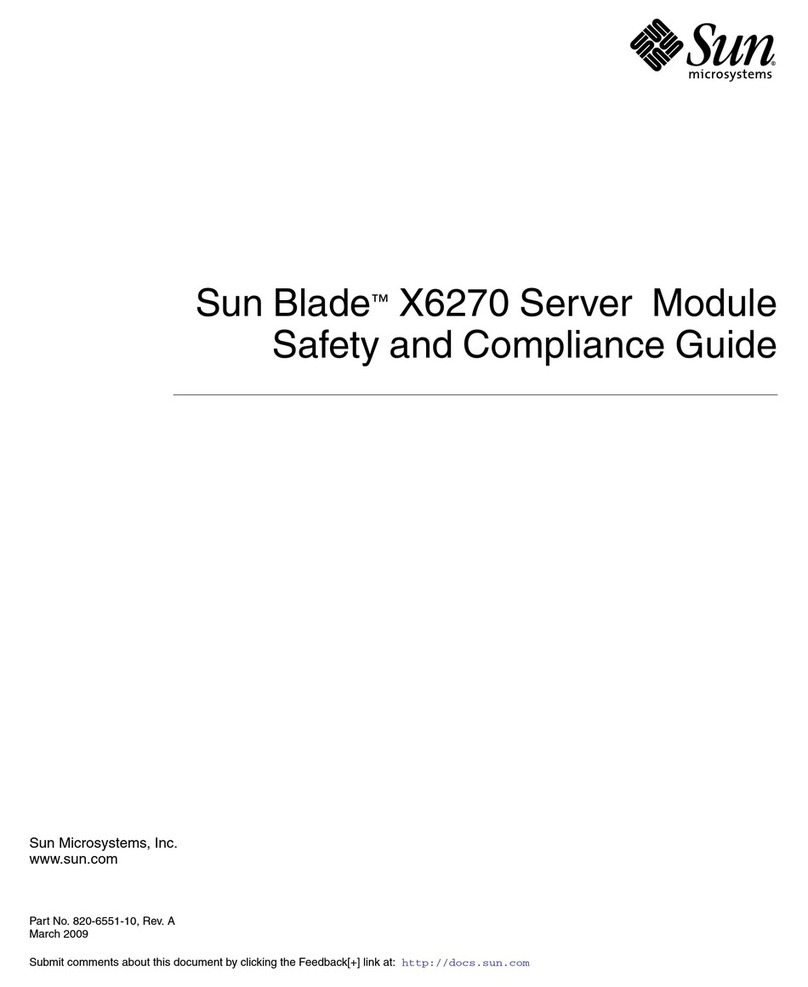
Sun Microsystems
Sun Microsystems Sun Blade X6270 Safety and compliance guide
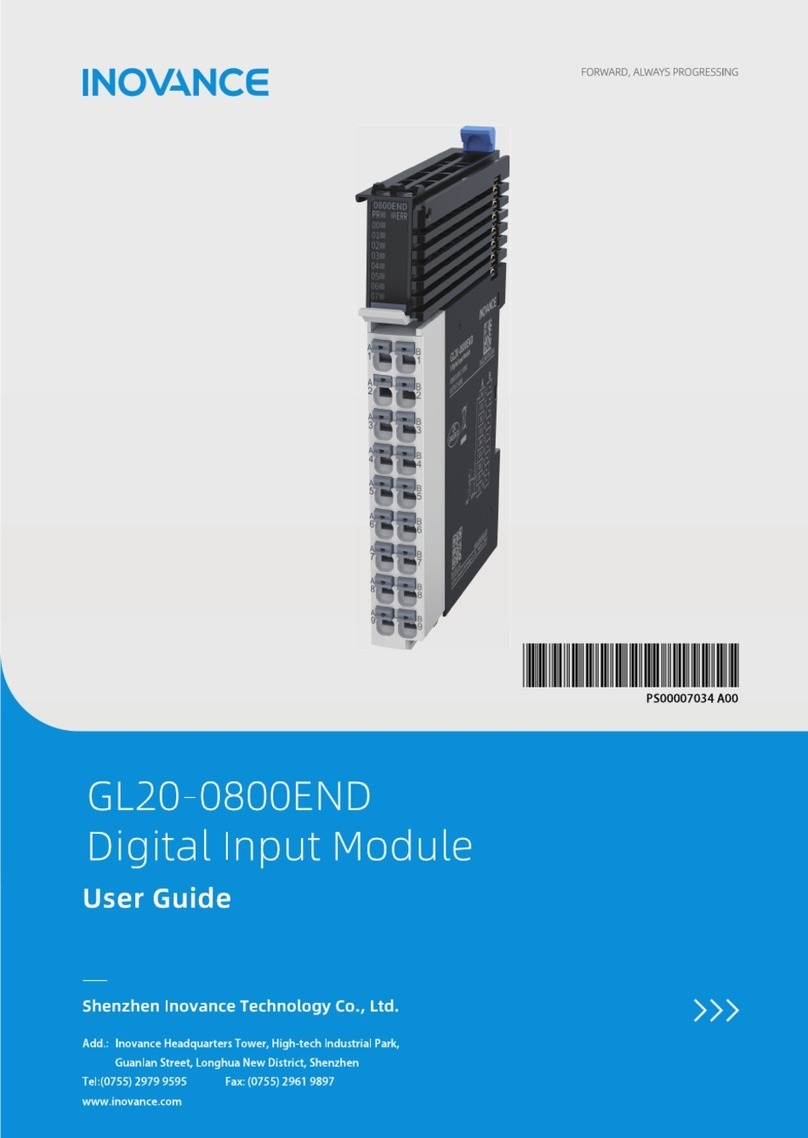
Inovance
Inovance GL20-0800END user guide
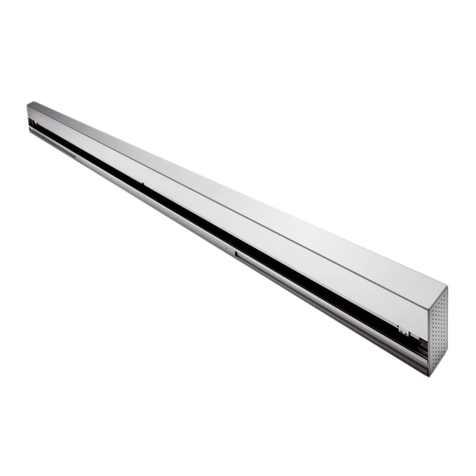
Dorma
Dorma ES 200 Easy quick start guide
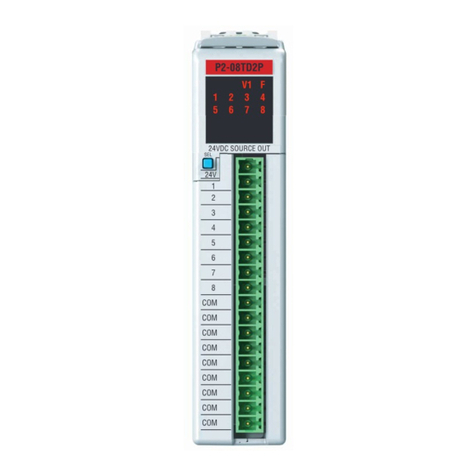
Automationdirect.com
Automationdirect.com Productivity 2000 P2-08TD2P manual

VAT
VAT 12150-PA24 ISO-320 Installation, operating, & maintenance instructions
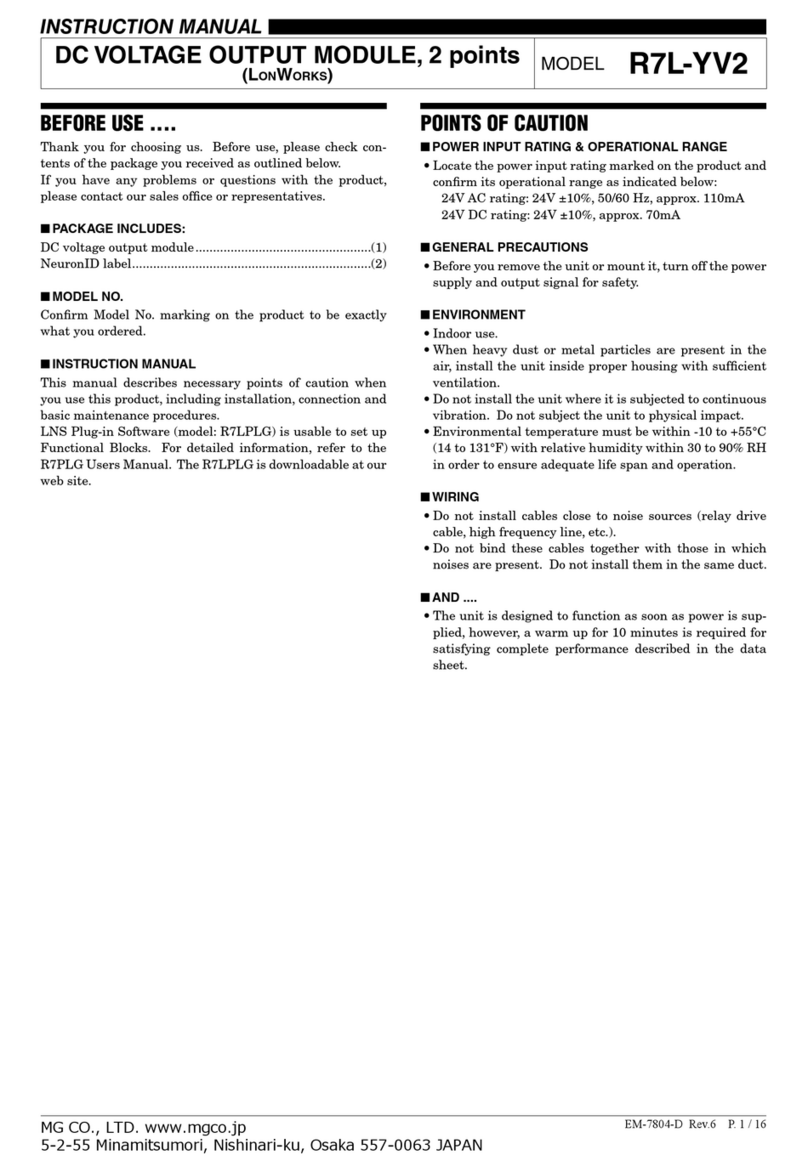
MG
MG R7L-YV2 instruction manual
